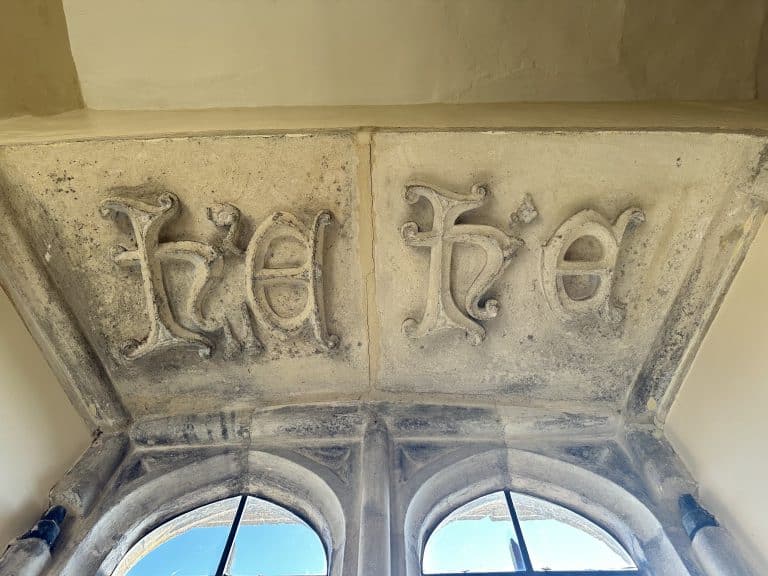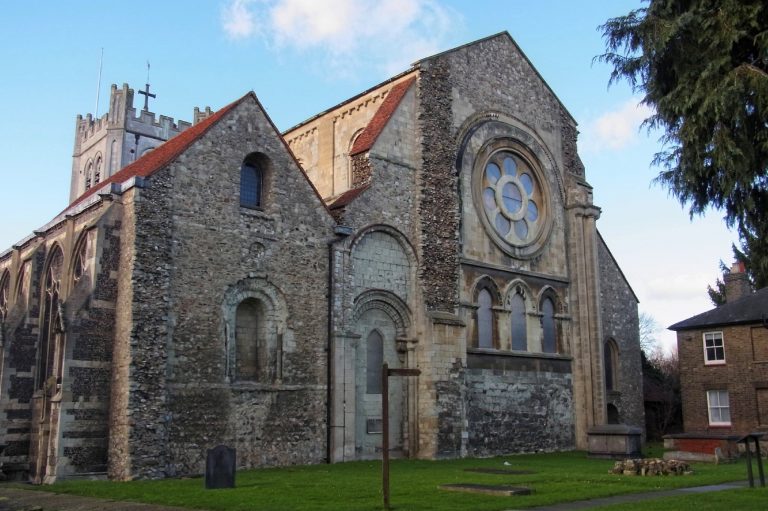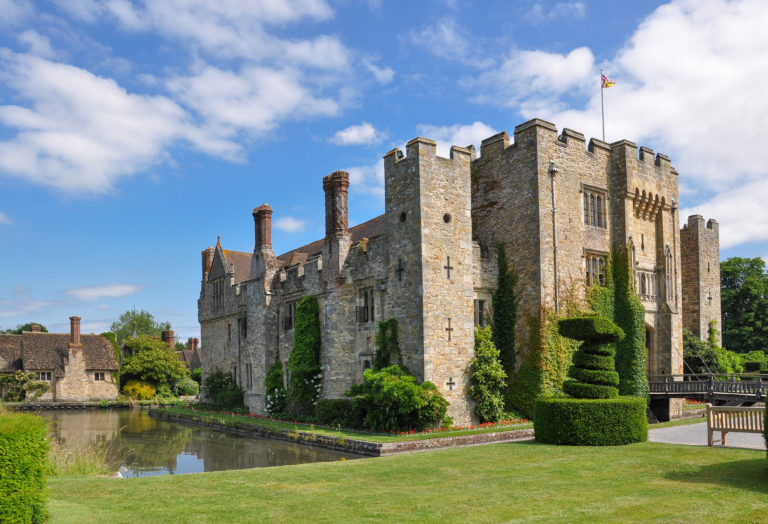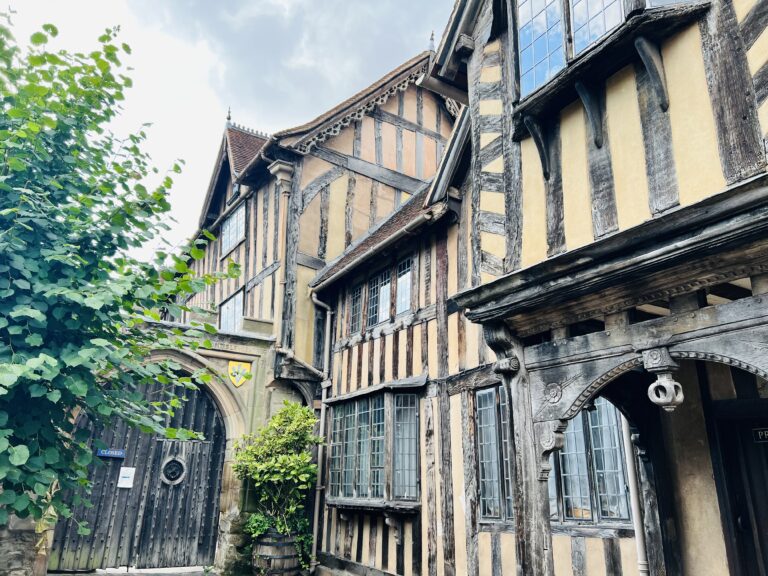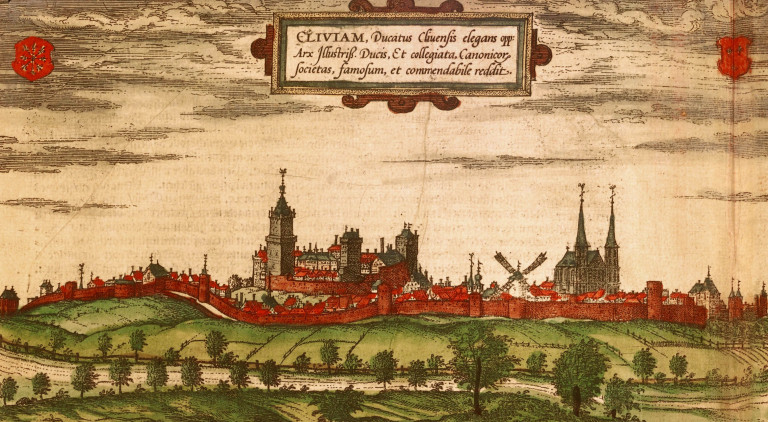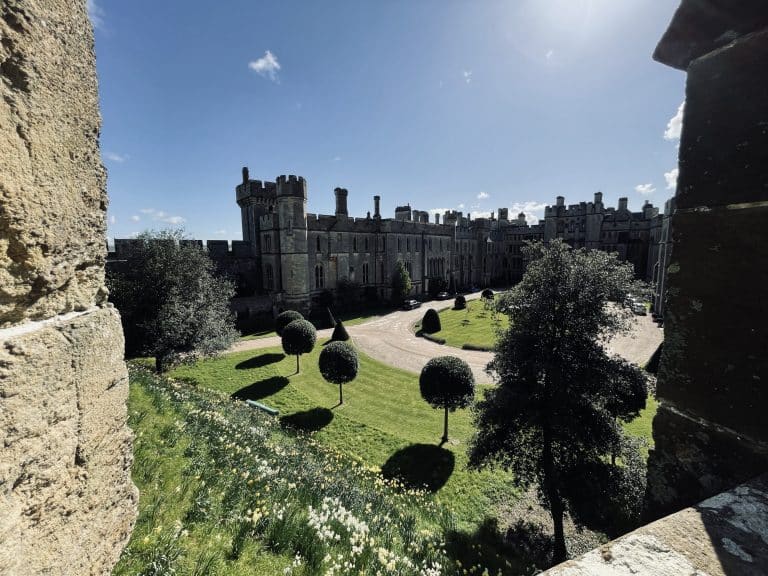Shakespeare Hotspots: 12 Must-See Places!
Do you simply love William Shakespeare? Are you crazy for The Bard? If so, England represents the pinnacle of Shakespeare country. It is the place you want to see when you hope to walk in the footsteps of the world’s greatest playwright. Once you finally make that trip over to the holy land of bard lovers, you won’t want to miss a thing! So, this killer list will tell you about the ’12 Best Places to See for Shakespeareans’ and will make sure you don’t head home without hitting all the essential stops. Thanks to Cassidy Cash from This Shakespeare Life for contributing this article to the blog. You can find out more about Cassidy at the end of this article…Let’s go!
Shakespeare’s Birthplace, Stratford Upon Avon
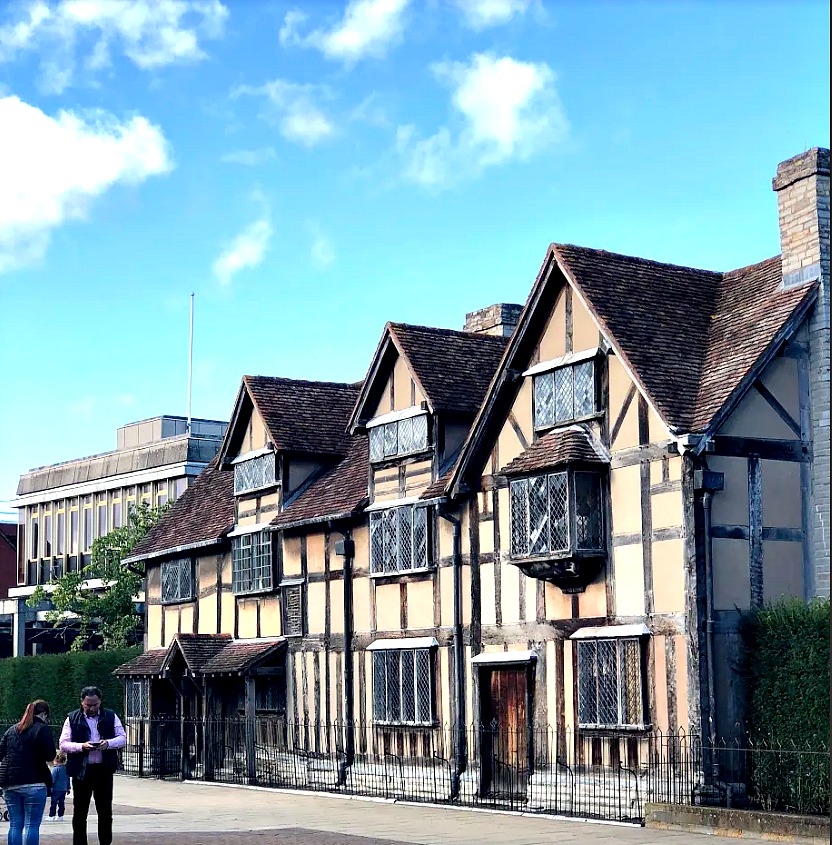
The most iconic stop for any bard lover is Shakespeare’s Birthplace. It is situated conspicuously right in the middle of a busy and crowded street. The very first time I saw this place it took my breath away, mostly because I was walking along an otherwise unassuming street before rounding the corner to behold Shakespeare’s Birthplace – just like in the pictures! It’s truly amazing. When you walk through the exquisitely maintained Tudor home, you can stand in the very room where a young William took his first breath of life, and where he rather miraculously survived childhood despite many bouts of plague, which sprung up literally right outside his door.
Before you leave:
- Ask the costumed guide to take a picture with you beside the large picture window upstairs.
- Stop by the glass-enclosed window that’s been preserved and see if you can spot a signature of some of the most famous artists who signed it when they stood where you are standing. People like Sir Walter Raleigh, Charles Dickens, or even Oscar Wilde, have all been here and signed the window. You cannot sign it today, as it’s preserved as a historical artefact, but you can search the existing signatures to see which famous authors you can find.
Shakespeare’s Grave: Holy Trinity Church, Stratford Upon Avon
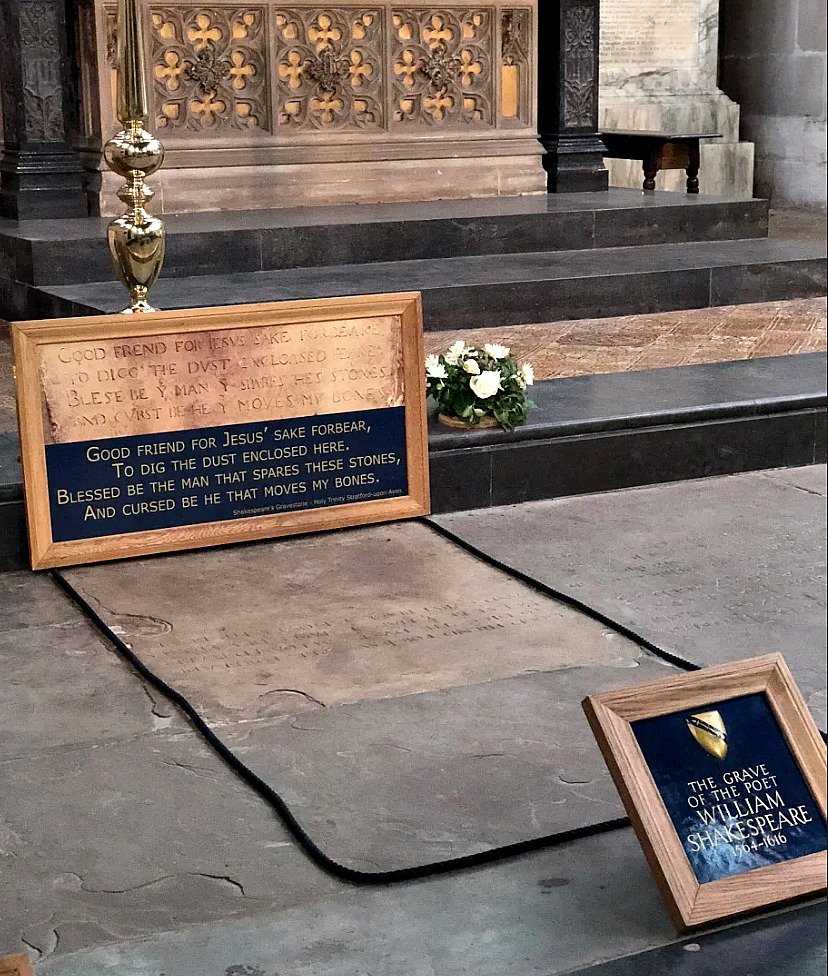
Considered England’s most visited parish church, this small and unassuming little church is truly gorgeous and the long tree-lined path to enter it is just the beginning. Once you enter through the ornate door, you will truly want to stop and stare for a while at the high arches, the beautiful stained glass, and talk with the parishioners there. You are asked to pay a small donation to enter the sanctuary and behold Shakespeare’s grave, but it’s only 5 pounds to get to lay your own eyes on the actual grave of William Shakespeare, and to read the foreboding curse warning visitors against moving his bones!
Before you leave:
- Look at the other graves inside Holy Trinity Church. You’ll notice that Judith Quiney’s grave is obviously missing from the family graves laid to rest at Holy Trinity Church. No one knows exactly why she isn’t there. Can you find her?
- Pay close attention to the large stained glass window before you arrive at Shakespeare’s grave, that was a gift to the town of Stratford Upon Avon from the United States.
- The gift shop has adorable mementos and I especially love the small bear.
Shakespeare’s Stratford Home: New Place, Stratford Upon Avon
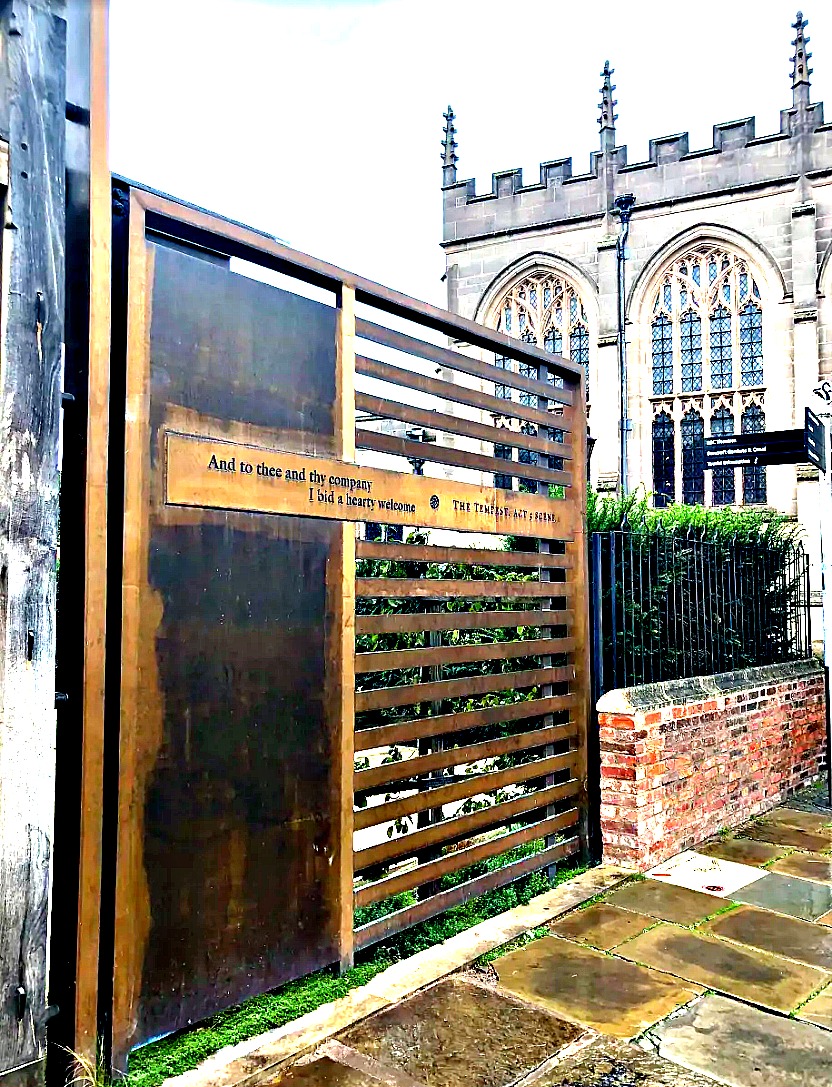
William Shakespeare was 33 years old when he bought the second-largest house in Stratford Upon Avon in 1597. While the original house is now demolished, the site contains a floor map you can walk through showing what, archaeologists believe, is the outline of the original structure. Shakespeare’s daughter once entertained Queen Henrietta, wife of King Charles I, here at New Place. What is really the star of this stop, though, are the gardens. From the knot garden to the medicinal herb gardens, there’s more Shakespeare history than meets the eye and you’ll need a keen eye to find it, but once you do, it’s unforgettable.
Before you leave:
- Nash’s House was once connected to New Place, and is now an adjacent building.
- At the rear of New Place an old mulberry tree grows, and legend holds that the tree is descended from an old tree planted by Shakespeare.
- After you go through the gate, keep walking, pass through the Tudor Knot garden and go on to the Great Garden. There, you’ll find the Wild Bank of plants which are mentioned in Shakespeare’s works.
Shakespeare at School & The Guildhall, Stratford Upon Avon

William Shakespeare attended King Edward VI grammar school in Stratford Upon Avon. The old schoolroom is still there and you can walk through the very room where a young William Shakespeare read his first play and performed in the annual school performance. Described as “one of the most atmospheric, magical and important buildings in the whole of Britain” by historian and broadcaster, Michael Wood, and within walking distance of Shakespeare’s birthplace, this spot is definitely on the list of don’t miss places.
Don’t miss items: Practice your Tudor school lessons, and write with a real quill and ink. You can also dress up like a Tudor student and take a photo of yourself to keep. Make sure you check out the medieval wall paintings at the Guildhall and don’t forget to stop at the cute gift shop on the way out (there are really neat Shakes-bears there!)
The Guild Chapel, Stratford Upon Avon
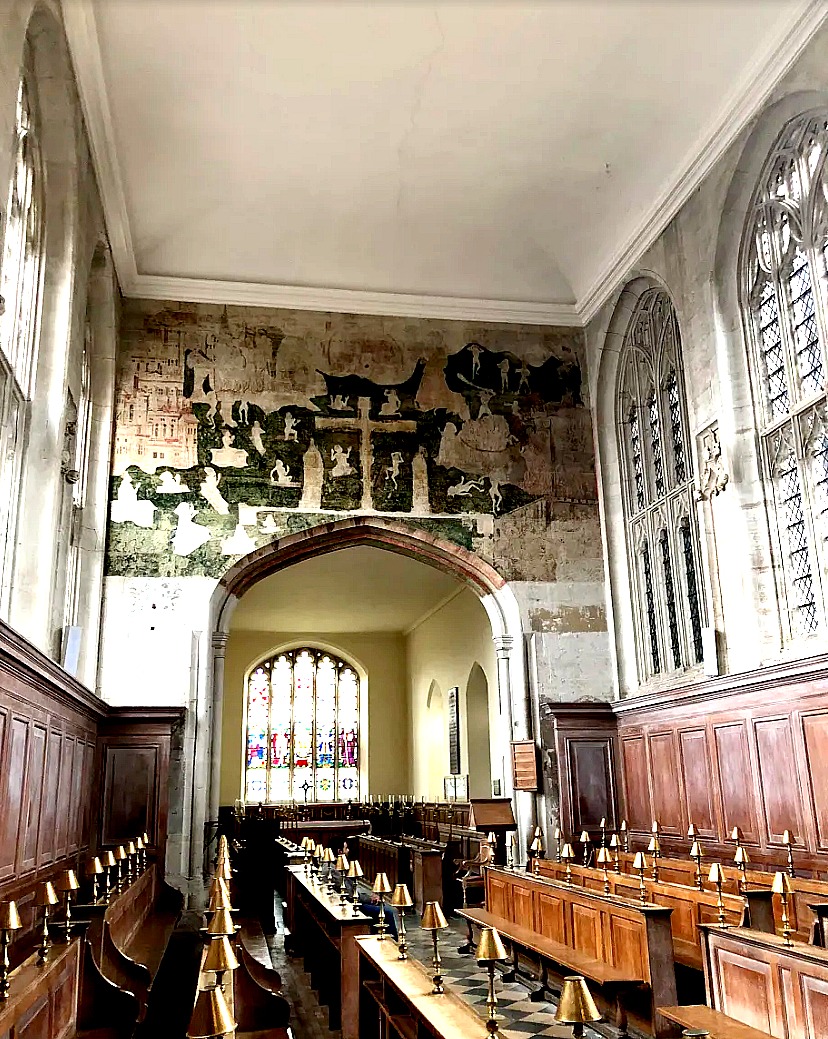
Built by the Guild of the Holy Cross, the prominent religious and social organisation grew to become central to medieval life in Stratford-upon-Avon. During the English Reformation, the paintings on the walls of the Guild Chapel were ordered to be removed, and it was Shakespeare’s father – John Shakespeare – who, as town bailiff, was in charge of making sure that happened. Rather than erase or demolish them, however, John Shakespeare lime-washed over the paintings, thus preserving them. 450 years later, they were uncovered, revealing a slice of what life was like for ordinary townspeople in Stratford Upon Avon, almost 500 years ago.
Don’t miss items: Make sure you stop and see all the frescos, walk all the way to the back of the chapel and really take your time with them. The paintings look more like graffiti, really, rather than high art, but contemplating what they might have represented for Shakespeare and his fellow townspeople, before they were washed over, is endlessly fascinating.
Shakespeare and His Sweetheart: Anne Hathaway’s Cottage
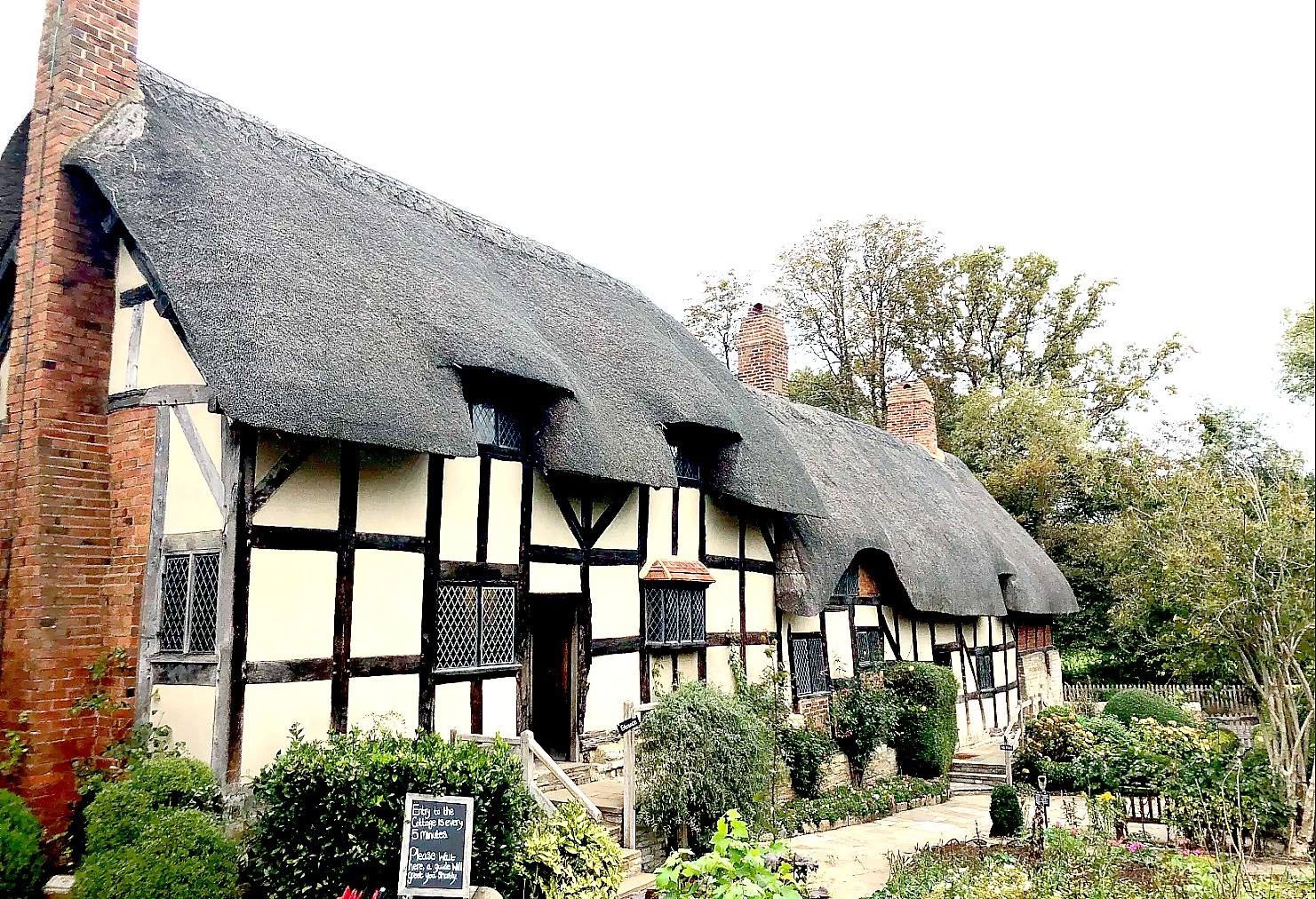
This cottage is the place where Anne Hathaway lived with her family until she married William Shakespeare. ‘Cottage’ makes the place sound small, but originally it comprised over 90 acres of land, and the building itself has 12 rooms. It belonged to the Hathaway family until the late 1800s when it was bought by the Shakespeare Birthplace Trust. The Trust removed the additions, and alterations, which had been made to the original structure and returned it to the state you could have expected to see it in Shakespeare’s day. Known as ‘Hewlands Farm’ when Shakespeare was wooing the young Anne Hathaway, the house is now attached to beautiful gardens and is open as a museum.
Don’t miss items: Make sure you take a look at the wooing chair, which Shakespeare is thought to have sat in to woo Anne Hathaway. There is also a bench right as you start to leave the self-guided tour, and you can see knicks in the side where entrepreneurial family members once tried to sell pieces of a bench said to have belonged to Shakespeare.
Everyday Life in Mary Arden’s Farm
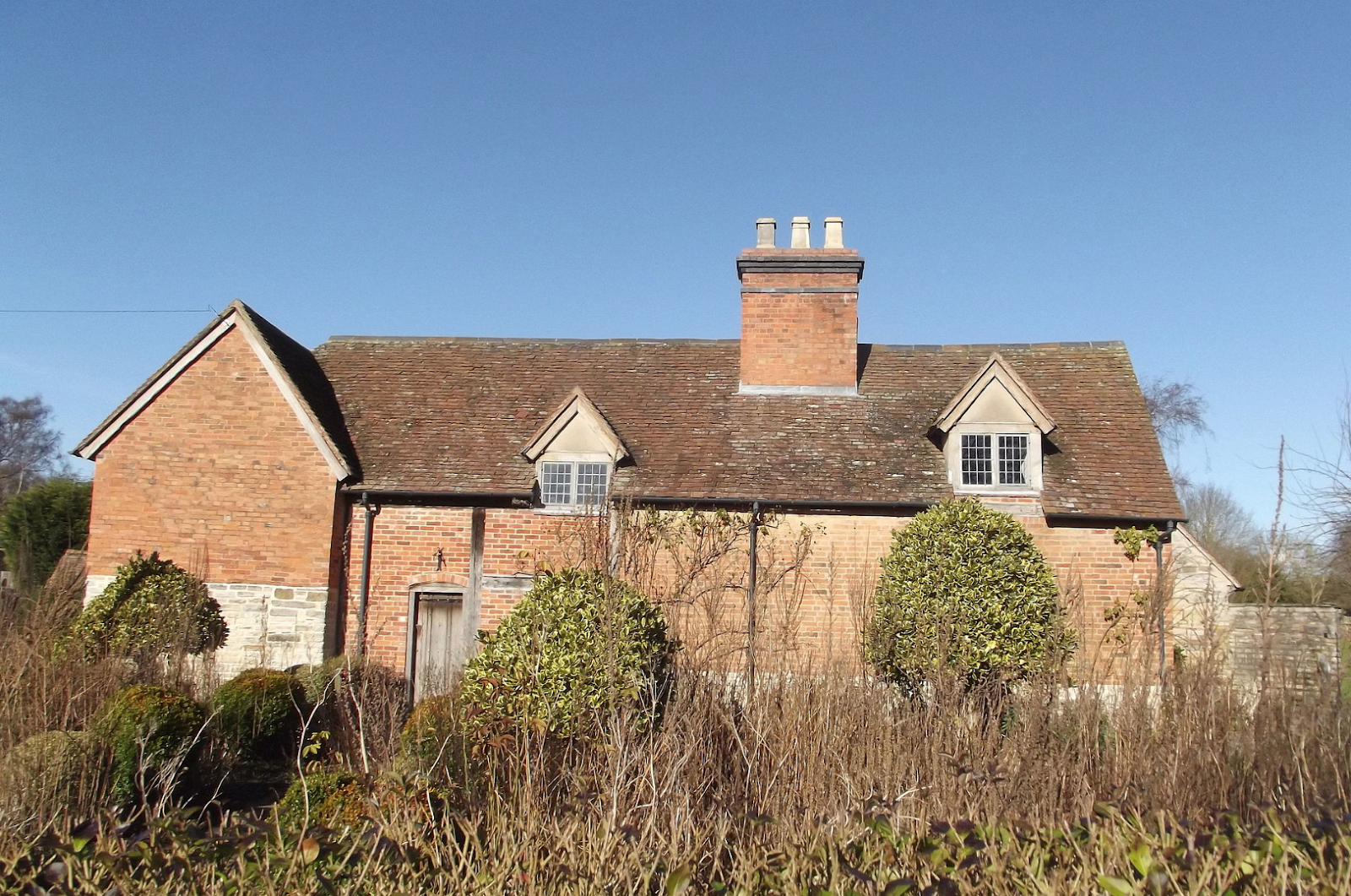
A working farm, Mary Arden’s farm is designed to show you what kind of livestock and animal life would have been living in Stratford Upon Avon when Shakespeare was a resident there. Mary Arden was William’s mother, and her father Robert, was a member of the Guild of the Holy Cross (which painted the ancient paintings at the Guild Chapel we mentioned earlier). This farm represents the family home where Mary lived up until she married John Shakespeare in the late sixteenth century.
Don’t miss items: At the farm, you can see many livestock animals, and you can even learn about falconry, the popular Tudor sport, so often mentioned in Shakespeare’s plays. This excursion costs extra and you do have to call ahead to confirm availability, but when it’s on offer, you can fly beautiful owls and Harris hawks, while learning about how their ancestors were used by the Tudors (and possibly Shakespeare himself) for hunting and sport.
Shakespeare’s Daughter: Hall’s Croft
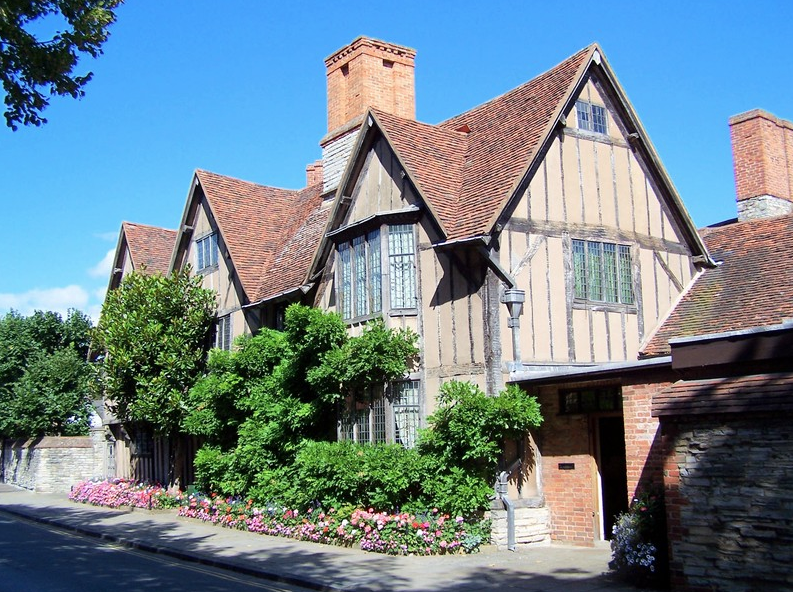
Built in 1613, three years before Shakespeare died, Hall’s Croft is the home of John Hall and Susanna, Shakespeare’s firstborn daughter. The structure is impressive and includes architecture styles that reflect John Hall’s considerable amount of wealth and status. The displays inside the home emphasise Hall’s high society reputation, commensurate with his role as a town medic. In addition to the gorgeous home, the property contains a substantial walled garden with elaborate roses and beautiful borders.
Don’t miss items: There is an apothecary setup here at Hall’s Croft. While not original to the property, or Dr Hall, the display does showcase some of the medicines and tools that John Hall might have used. There is also a medicinal herb garden here that features many of the herbs Shakespeare talks about in his plays. Walking through these gardens with John Hall is one-way historians believe Shakespeare would have acquired the medicinal knowledge about plants we find referenced in his works.
Shakespeare on the Stage: The Globe Theatre, London
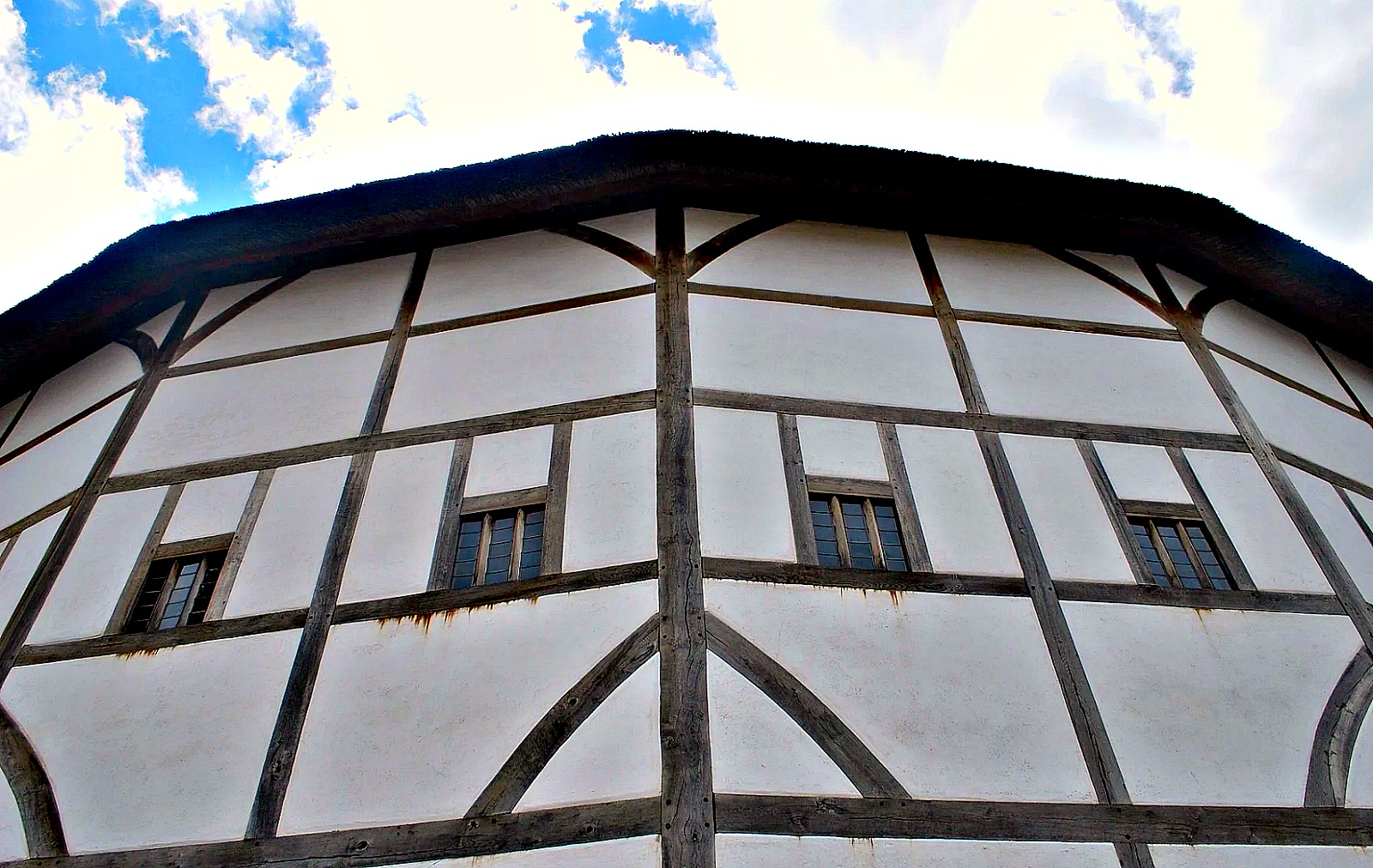
The theatre that started it all! The Globe Theatre is William Shakespeare’s first theatre, which he founded with his friend, and colleague, James Burbage. By 1599, the Globe was well established, and for 14 years it dominated the stage performance industry in London, hosting some of Shakespeare’s greatest plays. While the original structure was destroyed in 1644 a victim of the Puritan movement, the structure there now is a painstakingly detailed recreation, which utilized sixteenth-century construction methods and materials to bring Shakespeare’s greatest theatre back to life.
Don’t miss items: Make sure you take time to learn about Sam Wanamaker. Stop in to see the Sam Wanamaker Playhouse, an indoor theatre similar (but not a replica) to the Blackfriars. Sam Wanamaker was an American actor passionate about Shakespeare, and it was his vision for a recreated Globe which means this glorious venue can be enjoyed for posterity once more.
The River Thames, London
This river runs through the heart of London. It would be incredibly hard to miss, but just in case you are not aware of the significance of the river to Shakespeare, stop and pay attention. In Shakespeare’s time, the Thames was a mode of transportation, with many playgoers opting to arrive at the theatre by riverboat, particularly when the roads were too muddy to traverse on foot. You can stop at several places along the river, and see potential docking points for boats that crossed the river to get to The Globe. If you want a real Shakespearean experience, take a riverboat tour from one side of the Thames to the other, and arrive at The Globe just like your fellow Shakespeare fans did in the 16th century.
Don’t miss items: You can see Big Ben from the water when you travel on a river cruise, and if you get on the right riverboat, you can even enjoy lunch on the water. Pay attention as you cross over to how the river has changed since Shakespeare’s time.
Shakespeare by Royal Appointment: Banqueting House, The Old Palace of Whitehall
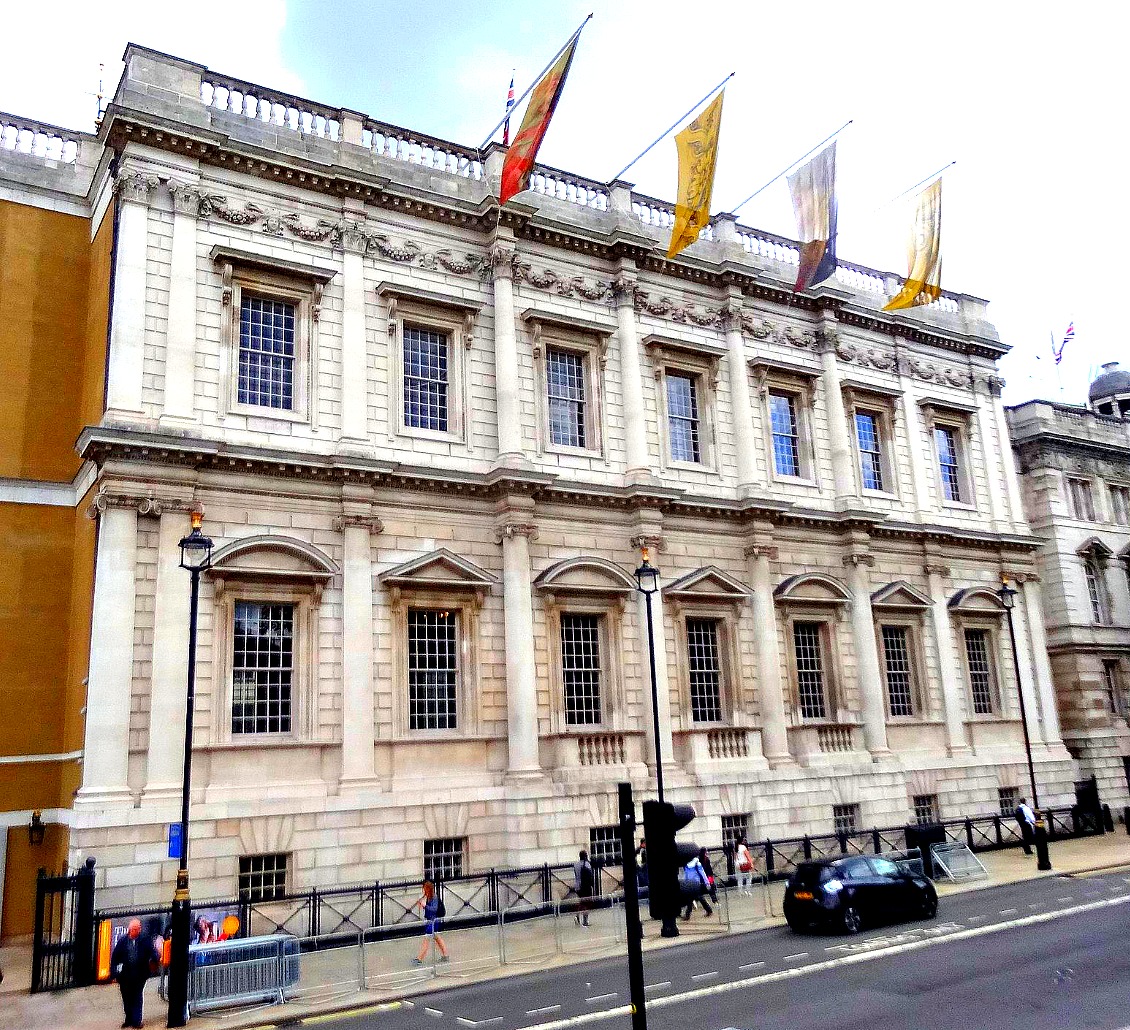
The last remaining part of Whitehall Palace is called Banqueting House. It is one of the only (if perhaps the only) places in England where you can still stand exactly where Shakespeare’s playing company performed their plays. Banqueting House is where Shakespeare staged several of his plays, including The Tempest, for King James in 1611.
Don’t miss items: Make sure you look up! One of the highlights of Banqueting House is the ceiling. While the ceiling was not in place when Shakespeare performed there, it is immaculate. Most likely commissioned by Charles I, it was installed by 1636. The paintings represent the only surviving in-situ ceiling painting by Flemish artist, Sir Peter Paul Rubens. It is also one of the most famous works from the golden age of painting. Interestingly, this ceiling was one of his last sights before he lost his head. The King was executed on a scaffold outside on Whitehall in 1649.
Shakespeare at The National Portrait Gallery

Housing the most extensive collection of portraits in the world, The National Portrait Gallery started with Shakespeare’s ‘Chandos portrait’, being the very first portrait the gallery ever owned. After buying the ‘Chandos portrait’, The National Portrait Gallery would go on to acquire over 11,000 images in statues, paintings, drawings, and miniatures, including no less than 96 representations of William Shakespeare himself!
Don’t miss items: The Chandos portrait of William Shakespeare is the most iconic representation of the Bard in existence today. It is also the one sole portrait thought to be of the real William Shakespeare. Also, make sure to see the ‘Droeshout portrait’; for a while, it was in the running to be the most likely portrait to have been painted during William Shakespeare’s lifetime.
About the Author

Cassidy Cash, is the host of That Shakespeare Life, the podcast that takes listeners behind the curtain and into the real-life of William Shakespeare. Cassidy believes that in order to understand and perform Shakespeare’s plays, understanding the history of the man who wrote them is essential. She uses art, illustrated guides, animated short films, and a podcast to help fellow Shakespeareans learn something new about the bard.
When she is not researching Shakespeare history or creating art about it, she homeschools two boys, enjoys cooking new recipes, and drinking too much coffee. Cassidy lives in Birmingham, Alabama, with her husband, Tim, a mountain of books, and more pets than is reasonable. Connect with Cassidy on Twitter @thatshakespeare, or via the website.

